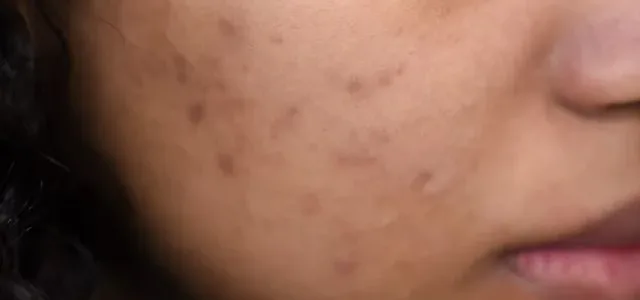One of the most common skincare concerns affecting individuals is hyperpigmentation. Also referred to as “dark marks” or “uneven skin tone”, hyperpigmentation occurs when melanocytes (pigment-producing skin cells) are triggered to produce more melanin (the pigment produced by our bodies).
When more melanin is produced, it results in darker spots on the skin, such as melasma, freckles, or age spots.
What triggers melanocytes to produce more melanin? First, sun exposure, which explains why it’s such a common skincare concern.
Melanin acts as our bodies’ natural protector against the sun. When the skin is exposed to sunlight, it is triggered to produce more melanin, which is why we get tanned when spending time outdoors.
Yet, the sun is not the only culprit. Hyperpigmentation may also be caused by:
- hormonal fluctuations
- trauma to the skin
- acne
- certain medications
Treating existing hyperpigmentation is possible, and there are various skincare products and professional treatments available to do so. Yet, there is also a lot of misleading information online that may lead people astray.
Busting Hyperpigmentation Myths
1. Myth: Lemon juice is an effective treatment for hyperpigmentation
Fact: This is one of the oldest myths around hyperpigmentation. Lemon juice will not reduce or remove hyperpigmentation.
Because of its acidity, it may have a negative effect on the skin’s pH level. This makes it even more vulnerable to the sun and the development of hyperpigmentation, as well as causing irritation.
2. Myth: Only darker skin tones are affected by hyperpigmentation
Fact: Darker skin tones already have a higher melanin content than lighter skin tones. As such, they are very prone to developing hyperpigmentation.
Yet, all skin tones are at risk of developing hyperpigmentation. This means that you need to take precautions when spending time in the sun – regardless of your skin tone.
3. Myth: Only older people are affected by hyperpigmentation
Fact: Many of us have come to associate hyperpigmentation with aging. As a result, we often refer to sun-induced pigmentation spots as “age spots.” This is not entirely unfounded. Hyperpigmentation does become more common in aging skin, yet it is by no means exclusive to older skin.
There are people as young as in their early twenties who are battling hyperpigmentation. This is often spurred on by:
- the use of oral contraceptives
- environmental stressors
- acne (which may lead to the development of post-inflammatory hyperpigmentation)
4. Myth: Once hyperpigmentation is treated, it won’t occur again
Fact: Sadly, this is not the case. Treating hyperpigmentation may be a long process, and even once treatment is completed, you may experience the development of new dark marks as time goes by.
This is because UV exposure, the aging process, and hormonal fluctuations will continue to affect the skin throughout one’s lifetime.
5. Myth: Scrubbing your skin will get rid of hyperpigmentation
Fact: Gentle exfoliation is an important part of all skincare regimes. It is effective for removing dead and dry skin cells from the surface of the skin. Yet, because hyperpigmentation is caused by an increase in melanin production by cells deep within the skin, no amount of scrubbing can remove it.
In fact, over-scrubbing or over-exfoliating may damage skin. This can lead to irritation, redness, sensitivity, and even breakouts.
Treating hyperpigmentation
Because hyperpigmentation may be caused by many different factors including sun exposure, hormonal fluctuations, medication, and more, it is essential to determine the root cause before embarking on a treatment journey.
Speak to your skincare therapist, dermatologist, or medical practitioner about your concerns – they’ll be able to recommend a treatment program and skincare regime suited to your individual needs.





![women [longevity live]](https://longevitylive.com/wp-content/uploads/2020/01/photo-of-women-walking-down-the-street-1116984-100x100.jpg)








